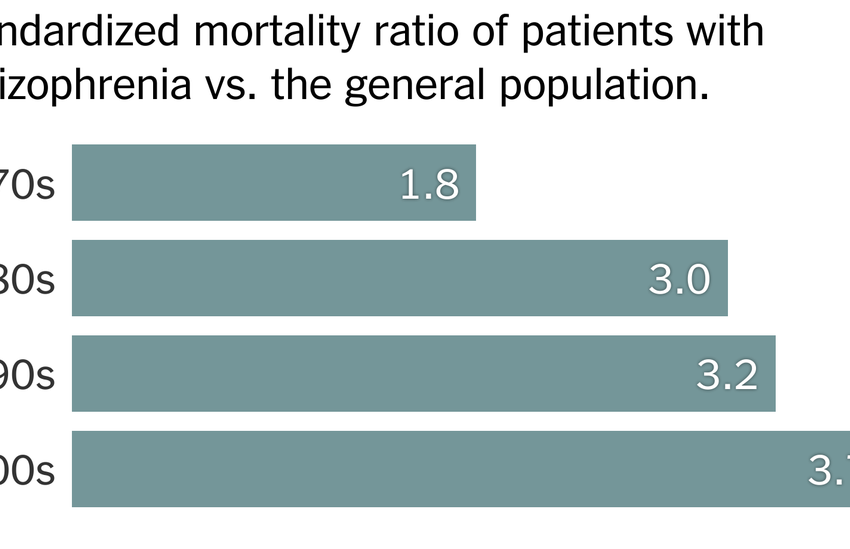Advertisement
Supported by
Americans with serious mental illnesses die 15 to 30 years earlier than those without.
I didn’t think our relationship would last, but neither did I think it would end so soon.
My patient had struggled with bipolar disorder his entire life, and his illness dominated our years together. He had, in a fit of hopelessness, tried to take his life with a fistful of pills. He had, in an episode of mania, driven his car into a tree. But the reason I now held his death certificate — his sister and mother in tears by his bed — was more pedestrian: a ruptured plaque in his coronary artery. A heart attack.
Americans with depression, bipolar disorder or other serious mental illnesses die 15 to 30 years younger than those without mental illness — a disparity larger than for race, ethnicity, geography or socioeconomic status. It’s a gap, unlike many others, that has been growing, but it receives considerably less academic study or public attention. The extraordinary life expectancy gains of the past half-century have left these patients behind, with the result that Americans with serious mental illness live shorter lives than those in many of the world’s poorest countries.
National conversations about better mental health care tend to follow a mass shooting or the suicide of a celebrity. These discussions obscure a more rampant killer of millions of Americans with mental illness: chronic disease.
We may assume that people with mental health problems die of “unnatural causes” like suicide, overdoses and accidents, but they’re much more likely to die of the same things as everyone else: cancer, heart disease, stroke, diabetes and respiratory problems. Those with serious mental illness are more likely to struggle with homelessness, poverty and social isolation. They have higher rates of obesity, physical inactivity and tobacco use. Nearly half don’t receive treatment, and for those who do, there’s often a long delay.
When these patients do make it into our clinics and hospitals, it’s clear that we could do better. A troubled mind can distract doctors from an ailing heart or a budding cancer.
For doctors, two related biases are probably at play. The first is therapeutic pessimism. Clinicians, including mental health professionals, often hold gloomy views about whether patients with serious mental illness can get better. This can lead to a resigned passivity, meaning that certain tests and treatments aren’t offered or pursued.
We are having trouble retrieving the article content.
Please enable JavaScript in your browser settings.
Thank you for your patience while we verify access. If you are in Reader mode please exit and log into your Times account, or subscribe for all of The Times.
Thank you for your patience while we verify access.
Already a subscriber? Log in.
Want all of The Times? Subscribe.
Advertisement

